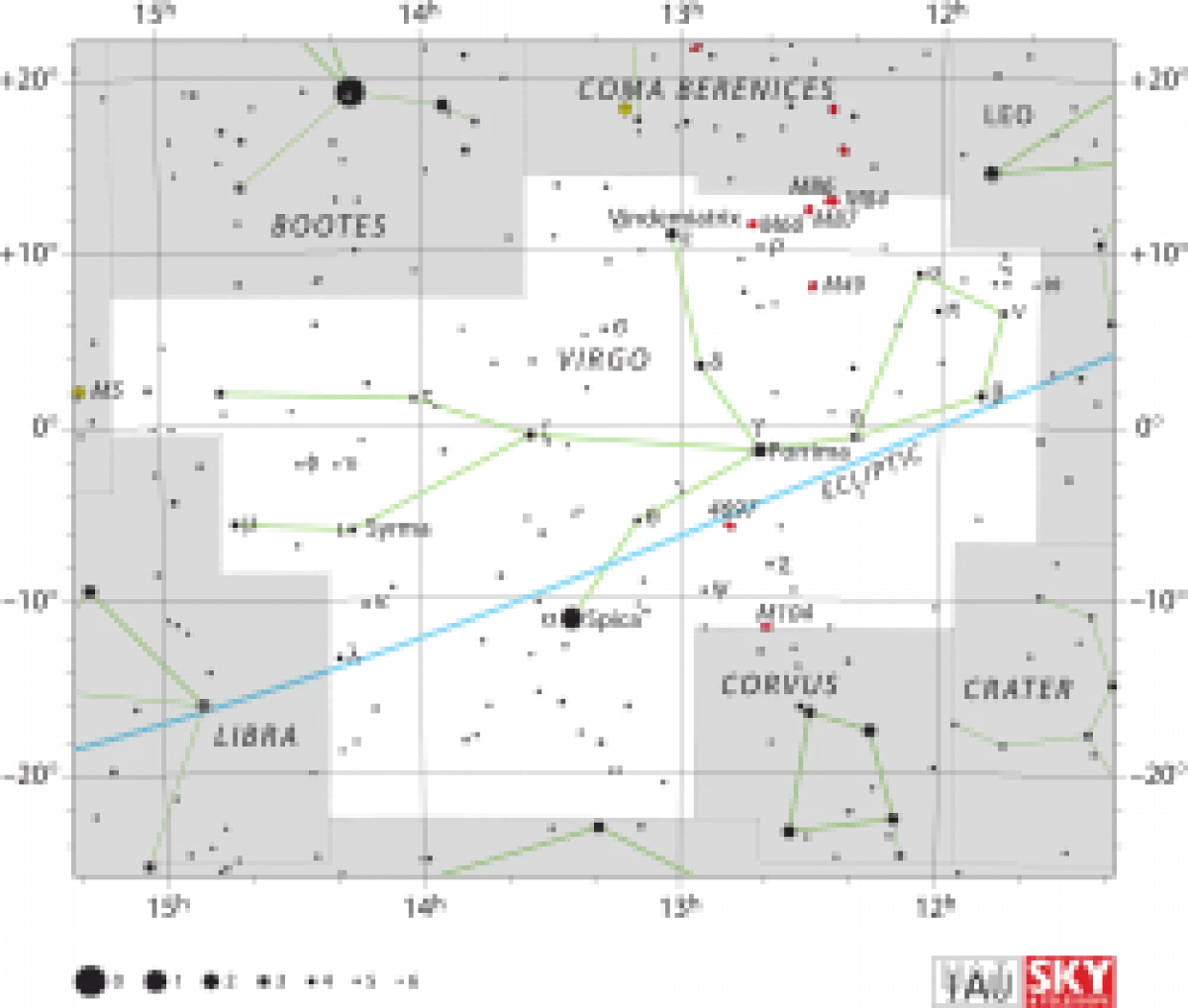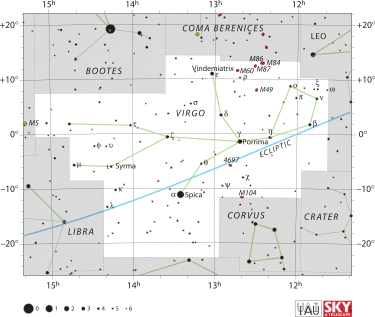
Virgo, the constellation of the zodiac known as "the Maiden," is a captivating constellation that holds a significant place in astronomy and mythology. With its old astronomical symbol resembling an ear of grain, it is associated with fertility and abundance. This article will take you on a journey to explore the wonders of Virgo and its rich celestial tapestry.
Location
 The constellation Virgo
The constellation Virgo
Prominently visible in the spring sky of the Northern Hemisphere, Virgo can be observed all night long during March and April. It is the largest zodiac constellation, and the sun takes an impressive 44 days to pass through it, longer than any other constellation. Virgo can be easily located by following the curve of the Big Dipper/Plough to Arcturus in Boötes and continuing in the same curve towards Spica, the brightest star in Virgo.
Features
Stars
In addition to the dazzling Spica, Virgo boasts other bright stars like Zavijava, Porrima, Auva, Vindemiatrix, and many more. These stars form distinct patterns in the sky, including the famous "Bowl of Virgo" asterism. Notably, several stars in Virgo are known for hosting exoplanetary systems, making them of great interest to astronomers and enthusiasts alike.
Exoplanets
Virgo is home to 35 verified exoplanets orbiting 29 stars. Among them are notable discoveries like PSR B1257+12, 70 Virginis, Chi Virginis, 61 Virginis, NY Virginis, and 59 Virginis. These exoplanets expand our understanding of the universe and its vast diversity.
Deep-sky objects
Due to the presence of the Virgo Cluster, located within its borders, Virgo is a treasure trove of galaxies. Notable examples include Messier 49, Messier 87, Sombrero Galaxy (M104), NGC 4639, and many others. The recent groundbreaking image of the central black hole in Messier 87, captured by the Event Horizon Telescope collaboration, has created a stir in the scientific community.
Mythology
 Virgo as depicted in Urania's Mirror, c.1825
Virgo as depicted in Urania's Mirror, c.1825
Virgo's rich mythological origins date back to ancient times. In Babylonian culture, it represented the goddess Shala and her ear of grain, symbolizing fertility. In Greek and Roman mythology, Virgo was associated with goddesses like Demeter and Ceres, both connected to agriculture and abundance.
Virgo was also linked to goddesses like Astraea and Iustitia, representing justice and fairness. In later Greek mythology, Virgo was identified as Erigone, the daughter of Icarius of Athens, and in some versions, as Persephone, the spring goddess.
Conclusion
Expanding our gaze beyond our daily lives, Virgo constellation invites us to marvel at the beauty and vastness of the universe. With its mesmerizing stars, intriguing exoplanets, and celestial wonders, Virgo serves as a reminder of the wonders that lie beyond our world. Explore the night sky and let Virgo guide you through the mysteries of the cosmos.
Citations
Ian Ridpath and Wil Tirion (2017). Stars and Planets Guide (5th ed.), William Collins, London. ISBN 978-0-008-23927-5. Princeton University Press, Princeton. ISBN 978-0-691-17788-5.











